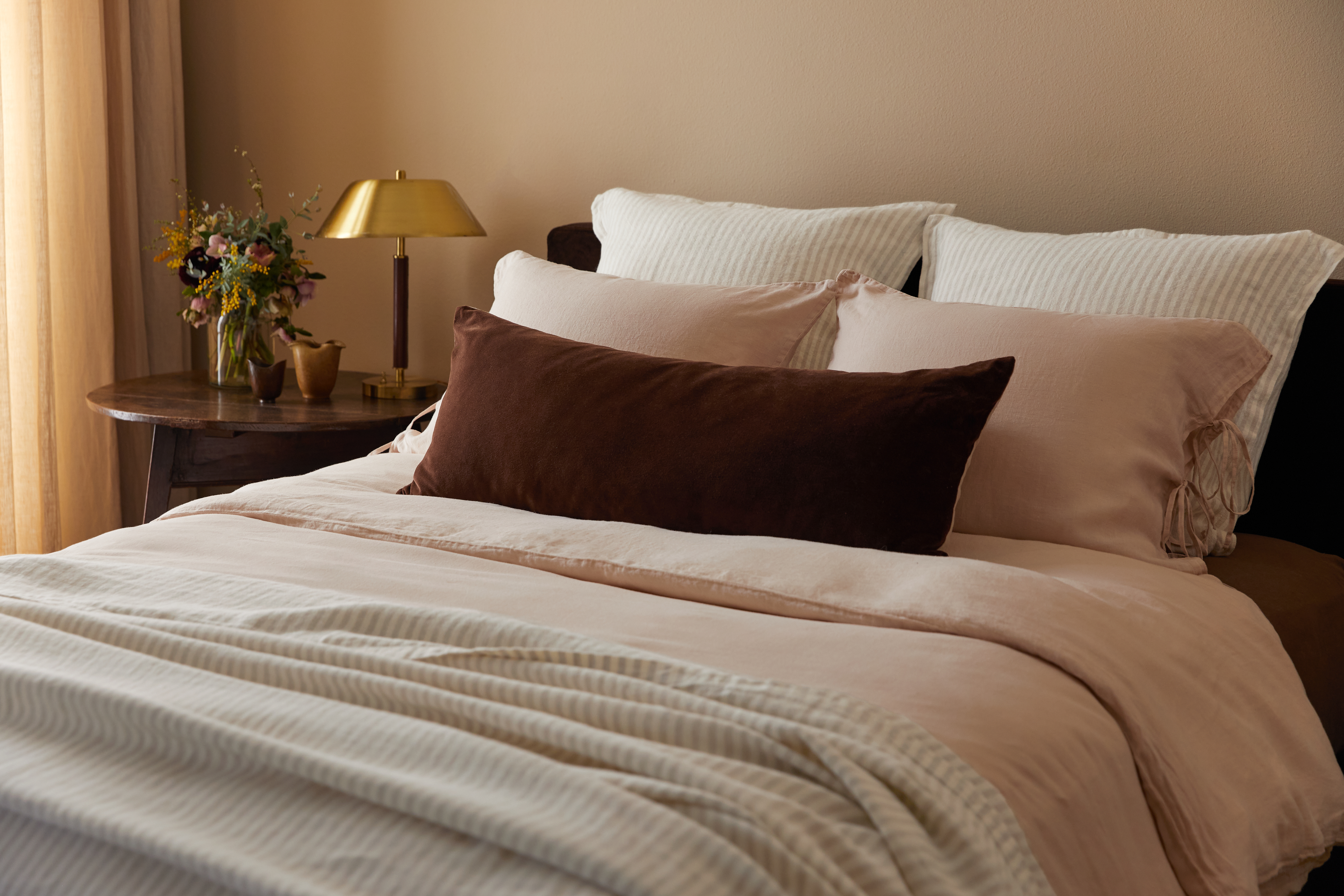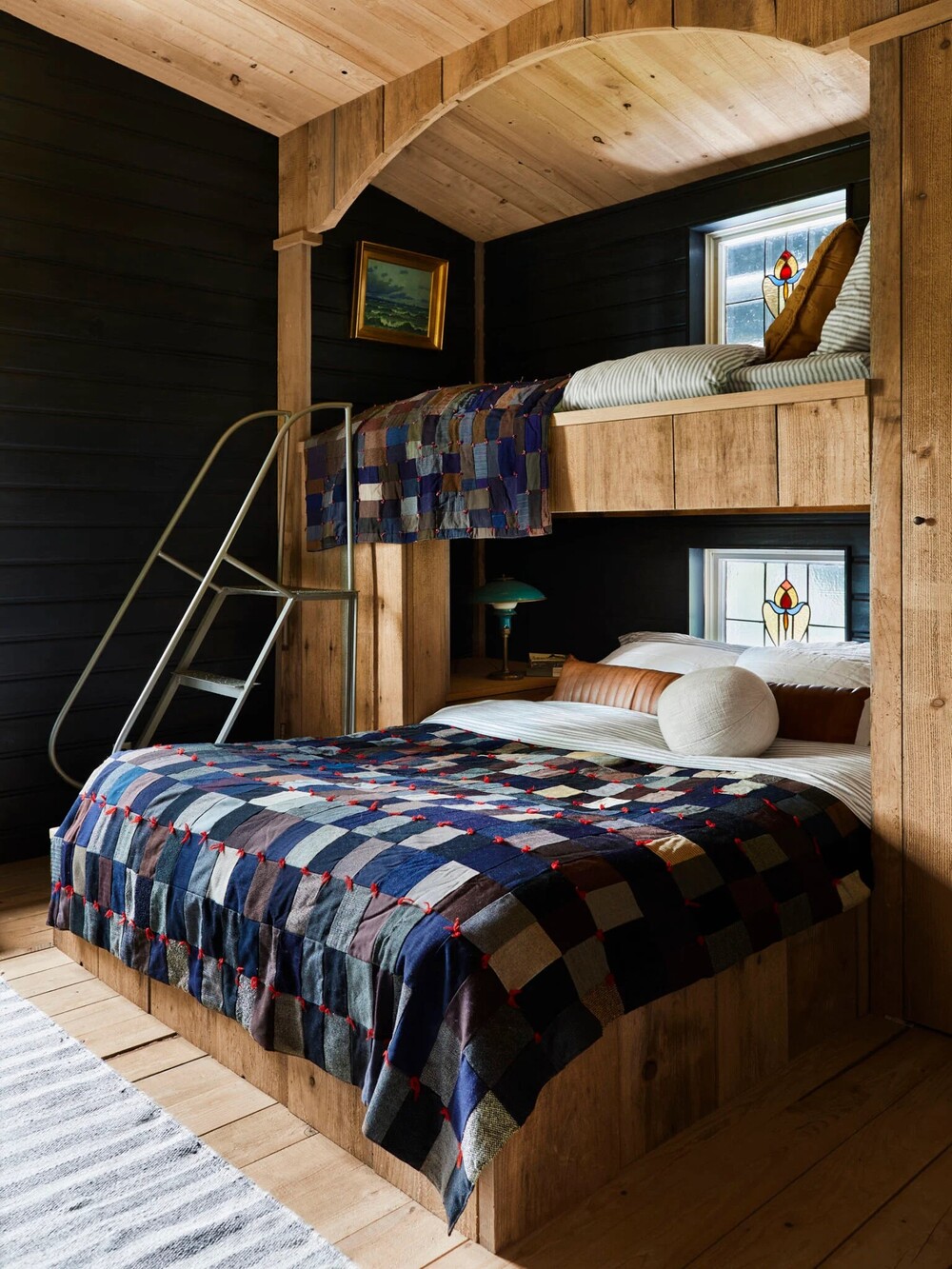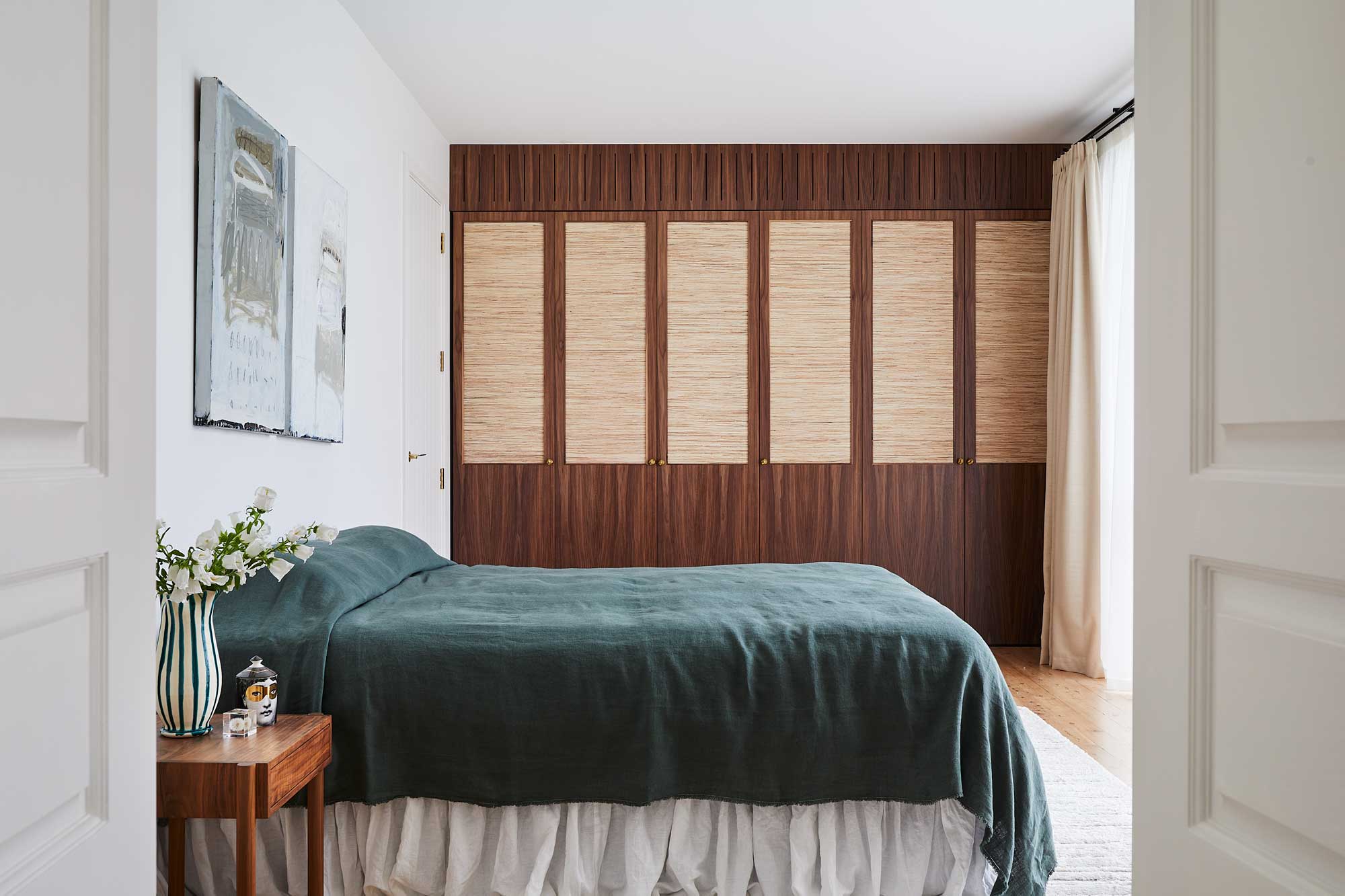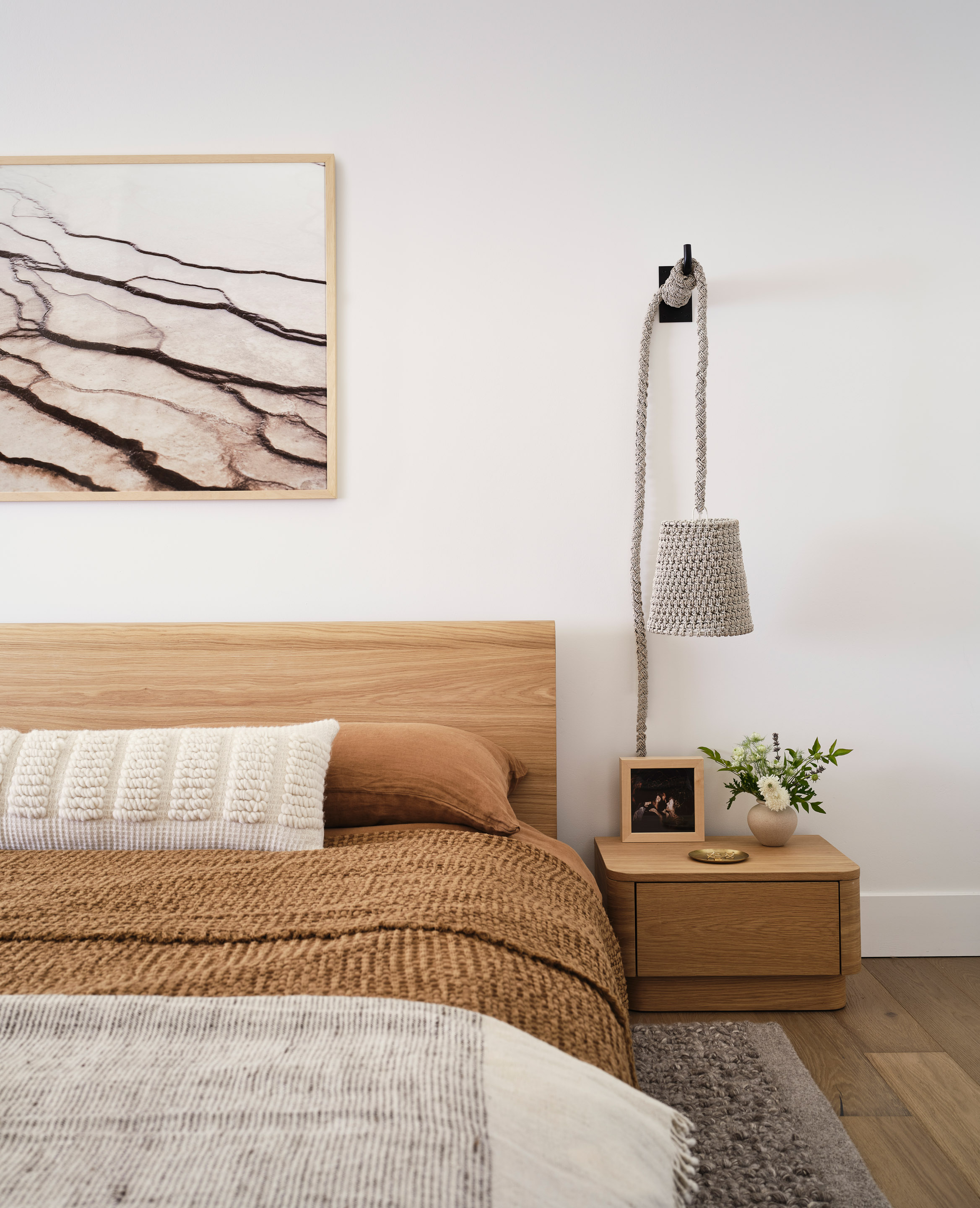
There's a lot to a well-dressed bed — those of us with the simplest set-ups may only have the bare minimum, but there's plenty of bedrooms out there with all manner of types of bedding.
Deciphering what's what, what you need and what you don't takes a little getting used to. But it's important. It can make all the difference to your comfort levels (and therefore, how well you sleep at night), as well as what your bed looks like.
I'm an interior stylist, so I've spent more time than your average person making and re-making beds, and I've come to understand the value in every piece of the puzzle when it comes to the different types of bedding. Ideally, the layers of bedding we cover ourselves with each and every night should be tailored to our individual needs — our interior style preferences, comfort and temperature regulation.
We've broken down exactly what you need to know about the different types of bedding, and how to style a bed that's right for you. Read on to delve into each key element to dress your bed to suit you best.
1. Mattress cover
A mattress protector does exactly what it says on the tin. It’s the removable base layer to your bedding, fitting over your mattress keeping it hygienic and preventing any stains. Some mattress covers will include a quilted design that will add a little extra cushioning, but nothing compared to a mattress topper.
If you deal with allergies, a quality mattress cover and hypoallergenic bedding will help you to stay healthy as you sleep.
2. Fitted sheet
A fitted sheet has elasticated corners, which stretches around the mattress. It keeps everything taut and in place with another layer of protection, comfort and hygiene.
It's worth pointing out, that once fitted or "bottom" sheets used to be one size fits all, but certain mattress brands are creating bigger, thicker mattresses, so it's worth checking sizes before you buy.
3. Flat sheet
A flat sheet can be an alternative to a fitted sheet, layered over the top of the mattress and is secured with traditional ‘hospital corners’, so you sleep on top of it. Generally, fitted sheets are much easier to make the bed with but if you like a traditional fold, then flat sheets are the way to go.
Top sheets are also often referred to as flat sheets, but they fulfil a slightly different role in the making of a bed.
4. Top sheet
A top sheet was traditionally used to lie underneath a woollen blanket before we introduced duvets for a comfortable bedding material.
You can, of course, still use it this way keeping your comforter or duvet cleaner for longer but, as Rebecca Udall, founder of homeware brand Rebecca Udall, says, "Nowadays, top sheets are brilliant in the summer as an alternative to a duvet if you are too warm. They also add decorative layering as the hem folds back on itself, which looks very smart."
Top sheets are common in North America, but less-so in Europe. Many Europeans choose a duvet in a duvet cover over a set-up with a top sheet.
5. Duvet cover
A duvet is the thicker layer of bedding, often filled with feather and/or down, but there are many polyester or even wool alternatives on the market, should you want to change filler seasonally.
A duvet is typically enclosed in a removable cover in which there are many styles and materials to choose from.
6. Comforter
Next, comes the comforter — a thick, heavy cover serving as the top layer. A comforter is similar to a duvet in its make up, but are generally thinner than a duvet. They also don't use removeable covers, so are decorative in design. When you need to wash it, you need to wash the whole thing, whereas with a duvet you can simply remove the cover.
This is, regardless, a great type of bedding to elevate your bed style, applying accent colors here with patterns and texture will set the tone for the rest of the room.
7. Coverlet

A coverlet is a fine, large sheet of a usually heavier fabric than a flat sheet that is used to drape over the entirety of the bed, including your pillows. It's removed when sleeping, but put back on during the day for a more tidy appearance to your bed.
It's a bedding trend we've seen revived in recent years, for a more modern, minimalist take on styling a bed.
8. Quilt

Typically, they are formed of a stitched design, a quilt is not as thick as a comforter, and makes a great portable cover for extra warmth on chilly nights, or for taking onto the sofa when you're having a lazy morning.
9. Pillows
In general, pillows are there to support your head and neck as you sleep, encased in pillowcases for protection purposes. Often, there will be more than one to give the sleeper the option of extra support. There are lots of types of pillows with different fillings to suit your comfort needs.
Throw pillows are a finishing touch, offering an extra spot to play with texture, color and pattern.
10. Bed skirt or valance

A bed skirt falls around the perimeter of the bed. Depending on the bed frame, this can hide a multitude of sins if you have storage tucked away underneath, or can simply leave a neater finish at the bottom of the bed to the floor.
They're a more traditional style in general, but may still be used with divan bed bases to hide un-decorative designs.
FAQs
What Types of Bedding Should I Choose?
"The way you dress your bed can affect your sleep," says Julia Forbes, Sleep product expert at Sleep Advisor. The colors, textures, and materials you choose impact your comfort and relaxation so understanding bed layers is important. Your bedding set can be made up of however many layers you choose, but there’s good reason for classing mattress protectors, sheets, duvet covers and pillowcases as essentials — mainly for hygiene, but also the interior styling.
The best way to dress a bed is entirely dependent on your preferences. Choosing materials that work with your body temperature will no doubt elevate your sleeping experience. Chief Creative Officer of Parachute, Amy Hoban assures us: "If you're a hot sleeper, opt for linen or percale," as these are the most breathable and able to deliver the best cool and crisp result. "A cold sleeper should opt for a thicker material like a brushed cotton or organic soft luxe. Additionally, everyone should consider the inserts they are sleeping with. For example, a hot sleeper may wish to opt for a lightweight duvet or thin quilt."
If allergies or skin sensitivities are a concern, look for hypoallergenic options.

How Do I Combine Different Types of Bedding?
It’s vital to consider your bedroom style before buying any new bedding, as it should complement the ambiance, providing the exact kind of environment you look forward to coming back to each day.
Jodi Peterman, Interior designer and founder of Elizabeth Erin Designs, encourages mixing things up: "Combine textures - cotton sheets, linen duvet covers, and plush throws to add depth and interest to your bed while maintaining a soothing color scheme," she continues, "Play with patterns. Subtle patterns in calming colors can add visual interest without overwhelming the senses," think stripes, or subtle florals. Lastly, "layer colors. Start with a neutral base, such as white sheets, and add layers of soft blues, greens, or lavenders. This approach allows you to create a cohesive and tranquil look."
Rebecca says, "I really think it is best to channel what you like most and what suits the environment and architecture – we are all so different and what suits one home can look awful in another. It is important to work with the natural light in the room. It’s best not to try to over-lighten a naturally dark room, instead embrace it!"







